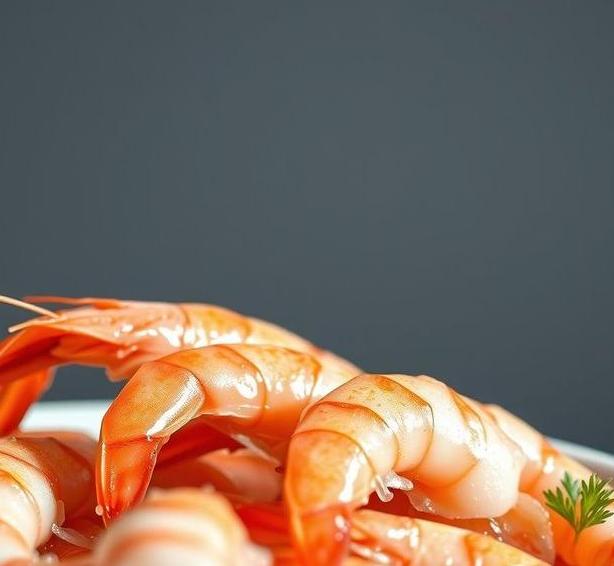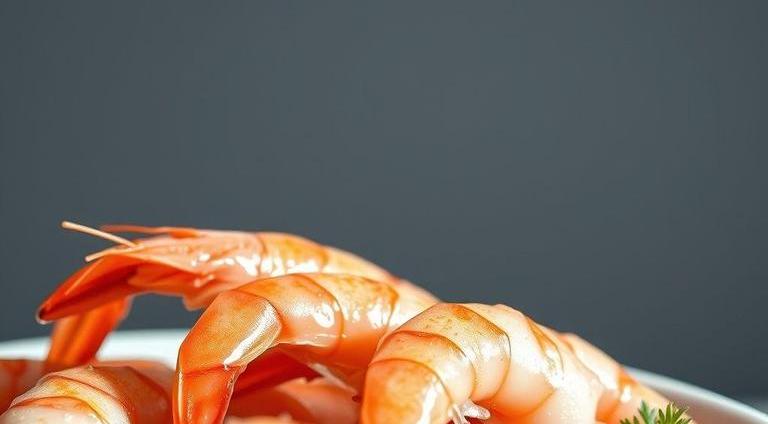Shrimp is one of the most versatile and delicious seafood options out there. Whether you’re grilling it, tossing it in pasta, or simply enjoying it in a shrimp cocktail, it’s hard to deny the appeal of this tiny but flavorful crustacean. But as with any perishable food, understanding how to handle, store, and assess shrimp is crucial to both taste and safety.
You might be wondering: Can shrimp go bad? The answer is yes-like any other protein, shrimp has a limited shelf life. In this guide, we’ll take a deep dive into everything you need to know about shrimp spoilage: from its shelf life to how to tell when it’s gone bad, and the best ways to store it to prolong freshness.
By the end of this, you’ll feel confident about handling shrimp in your kitchen, ensuring it’s fresh, safe, and ready to cook up perfectly every time.
Can Shrimp Go Bad?
Yes, shrimp can absolutely go bad-and it can happen quicker than you might think! Since shrimp is highly perishable, it is prone to spoilage if not stored or handled properly. Whether it’s fresh, frozen, or cooked, shrimp has a specific window of time in which it remains safe and tasty to eat.
The main culprits that lead to spoilage are:
- Bacteria growth: Like most seafood, shrimp is particularly vulnerable to bacterial contamination, which accelerates spoilage. The warm temperatures in the “danger zone” (40°F to 140°F) are prime conditions for bacteria to multiply rapidly.
- Oxidation: When shrimp is exposed to air for too long, it can begin to oxidize, affecting both the texture and flavor.
- Enzyme activity: Shrimp, like all seafood, contains natural enzymes that continue to break down its proteins even after it’s been harvested. This breakdown contributes to spoilage over time.
The good news? If you know how to store shrimp properly, you can slow these processes significantly and keep your shrimp safe to eat for longer.
Shelf Life For Shrimp

The shelf life of shrimp varies depending on how it’s stored and whether it’s fresh or frozen. Here’s a breakdown of how long shrimp lasts under different conditions:
Fresh Shrimp (Raw)
- In the fridge: If properly stored (in an airtight container or wrapped tightly in plastic), raw fresh shrimp can last for 1-2 days in the refrigerator. After this, bacteria can start to develop, and the shrimp will lose its freshness.
- At room temperature: Never leave raw shrimp out at room temperature for more than two hours (or one hour if the temperature is above 90°F). This is the perfect environment for bacteria to grow rapidly.
Cooked Shrimp
- In the fridge: Cooked shrimp can last for 3-4 days in the refrigerator when stored properly. The key is to keep it tightly covered and not leave it exposed to air or contaminants.
- In the freezer: If you want to extend the shelf life of cooked shrimp, freezing is the way to go. Frozen cooked shrimp will stay good for up to 6 months. The flavor and texture may degrade over time, but it’s safe to eat.
Frozen Shrimp (Raw)
- In the freezer: Frozen shrimp has the longest shelf life. If stored correctly (in its original packaging or wrapped tightly in plastic or foil), it can last for up to 6-12 months in the freezer. After this, it may lose quality but is still safe to eat.
Thawed Shrimp
- If you thaw shrimp (either in the fridge or in cold water), make sure to cook it within 24 hours for the best quality and safety.
Common Signs Of Spoilage
Knowing how to identify spoiled shrimp is essential for ensuring you’re not eating something dangerous. Here are the most common signs of shrimp spoilage:
- Foul Odor: Fresh shrimp should have a clean, briny, and slightly sweet smell. If it starts to smell sour, fishy, or like ammonia, it’s definitely gone bad. A strong, unpleasant odor is one of the most obvious indicators of spoiled shrimp.
- Discoloration: Fresh shrimp should have a translucent, light gray, or slightly pinkish hue. If you notice that the shrimp is turning a dull or yellowish color, or has dark spots or blackened areas, it’s likely spoiled. The same goes for any shrimp that has a mushy or slimy appearance.
- Slimy Texture: Shrimp should feel firm and slightly springy to the touch. If it feels slippery or slimy, that’s a clear sign of bacterial growth or decomposition.
- Tightness of the Shell: If the shell of the shrimp has come loose or is falling off easily, that can indicate it’s overripe and going bad. It’s often accompanied by an off smell or discoloration.
- Soggy or Off Texture: After cooking, if the shrimp feels mushy or overly soft, it’s a sign that it’s starting to break down.
How To Store Shrimp?

The key to keeping shrimp fresh is proper storage. Whether you’ve bought fresh shrimp or have some leftover cooked shrimp, here’s how to store it the right way:
Raw Shrimp
-
In The Fridge
- Keep raw shrimp in the coldest part of your fridge (usually the back).
- If the shrimp came in its original packaging, you can leave it there as long as it’s tightly sealed. Otherwise, transfer it to an airtight container or wrap it tightly in plastic wrap and aluminum foil.
- Place the shrimp on a bed of crushed ice in a shallow pan or bowl if you want to keep it even fresher. The ice will keep the temperature low and delay spoilage. Just make sure the shrimp isn’t sitting directly in water from melting ice.
-
In The Freezer
- For longer storage, place raw shrimp in a freezer-safe bag or container. It’s a good idea to remove as much air as possible to prevent freezer burn.
- You can also wrap individual shrimp in plastic wrap or wax paper before sealing them in a freezer bag.
Cooked Shrimp
-
In The Fridge
- After cooking, let the shrimp cool to room temperature (but no longer than 2 hours), and then place it in an airtight container.
- If you’ve seasoned the shrimp or used it in a dish like a shrimp salad, make sure the container is tightly sealed to preserve freshness and prevent odors from affecting the shrimp.
-
In The Freezer
- You can freeze cooked shrimp, but keep in mind the texture may suffer after thawing. To freeze, wrap the shrimp in plastic wrap, then place it in an airtight container or freezer bag. Make sure to label the date for easy tracking.
Expert Tips
- Don’t refreeze shrimp: If you’ve thawed shrimp, it’s best to cook it and not refreeze it. Refreezing can negatively affect both flavor and texture.
- Thaw shrimp safely: If you’re using frozen shrimp, always thaw it in the fridge overnight for the best results. You can also use the cold-water method (placing the shrimp in a sealed bag and submerging it in cold water) for faster thawing. Never thaw shrimp at room temperature.
- When in doubt, smell it: The best way to check if shrimp has gone bad is by smelling it. If it’s sour or ammonia-like, toss it.
- Don’t leave shrimp sitting out: Always make sure to cook or refrigerate shrimp as soon as possible after purchase or preparation. Leaving shrimp out for long periods significantly increases the risk of spoilage and foodborne illness.
- Use ice if transporting: If you’re taking shrimp home from the market or transporting it anywhere, use ice packs or keep it in a cooler to keep it at a safe temperature.
FAQs
How Can You Tell If Shrimp Has Gone Bad?
Shrimp that has gone bad typically has a strong, sour, or ammonia-like odor. The flesh may appear dull or discolored, turning gray or off-white. Additionally, if the shrimp is slimy to the touch or if it’s mushy instead of firm, it’s likely spoiled.
How Long Can Shrimp Stay Fresh In The Fridge?
Fresh shrimp can typically stay in the fridge for 1 to 2 days. To extend its freshness, shrimp should be stored in an airtight container or wrapped tightly in plastic wrap or foil, ideally on a bed of ice.
Can Shrimp Go Bad If Frozen?
Frozen shrimp can remain safe to eat indefinitely if kept at a consistent temperature of 0°F (-18°C) or lower. However, for best quality, they should be used within 6 to 12 months. Over time, freezing can cause shrimp to develop freezer burn, affecting taste and texture.
What Happens If You Eat Bad Shrimp?
Eating spoiled shrimp can lead to foodborne illness, typically causing symptoms like nausea, vomiting, diarrhea, stomach cramps, and fever. This is often due to bacteria like Vibrio, which can grow on shrimp that is improperly handled or stored.
Can Shrimp Go Bad In The Freezer?
Yes, shrimp can go bad in the freezer if it is stored improperly or if it is kept for too long. While freezing slows down the growth of bacteria, shrimp can develop freezer burn and lose quality if kept for extended periods beyond recommended storage times.
How Do You Store Shrimp To Keep It From Going Bad?
To store shrimp properly, keep it in the coldest part of your refrigerator in an airtight container. If freezing, place the shrimp in a resealable plastic bag or vacuum-sealed bag, removing as much air as possible. For both fresh and frozen shrimp, it’s important to keep them at consistent temperatures to prevent spoilage.
Can Cooked Shrimp Go Bad?
Yes, cooked shrimp can go bad. It should be stored in an airtight container in the fridge and eaten within 3 to 4 days. If not consumed within this timeframe, the shrimp can spoil, develop a bad odor, or change in texture.
Is It Safe To Eat Shrimp Past Its Expiration Date?
It’s generally not recommended to eat shrimp past its expiration date. If the shrimp shows signs of spoilage such as an off odor, color change, or slimy texture, it should be discarded. Always check for freshness before consuming shrimp, even if it’s within the date range.
What Does Spoiled Shrimp Smell Like?
Spoiled shrimp typically smells like ammonia, sourness, or rot. This odor is a strong indicator that the shrimp is no longer safe to eat and should be discarded.
Can You Get Food Poisoning From Shrimp That Is Slightly Off?
Yes, even shrimp that is slightly off can cause food poisoning. If the shrimp shows any signs of spoilage, such as an off smell, discoloration, or mushy texture, it is safer to discard it to avoid the risk of foodborne illness.